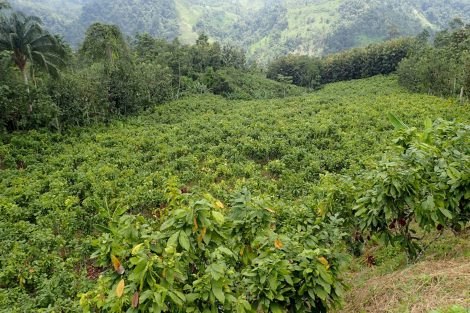The notion of quality is not directly linked to flavor, but rather to the health status (diseases, rot…).
When farmers are asked what potential they see for cocoa production in Cuba and Baracoa, they are confident that production can be increased. They add that it could be done by increasing the cultivated areas and also the yields. Increasing sales prices and land planning/development (e.g. drainage) are things they mentioned would help achieve this.
Another important difficulty is finding the necessary labor. There is a lack of young labor and there is a phenomenon of depopulation in some places. Access to supplies (e.g. fertilizers) is also a concern. Another concern is the frequency and impact of upcoming weather events, specifically high-intensity hurricanes.
For Cuban cocoa producers there is clearly a potential to increase both the area of cocoa plantations and intensification (increased yield). While good prices are an incentive to go in that direction, there are some limitations.
The lack of plant material and/or rodenticides has been mentioned. However, there is one limitation that seems greater: succession. Not only do farmers talk about depopulation, but also that younger generations are less interested in this work.
Consequently, cocoa farmers are not the only ones who age on the plantations. They have accumulated a lot of experience and it would be a real loss if they did not pass it on. The evolution of a plantation can be slow, but its complexity is great given the variety of plants that can be found in them, practical knowledge can help to deal with it.
Only a small workshop on the use of wood was seen, although in all the plots there are trees that can be turned into wood or firewood. When picked, the seeds lose a juice called “cocoa honey.” It is not widely used, but some people ferment it to produce an alcoholic beverage. These two examples above demonstrate that some potential can be left out.
Information taken from the master’s thesis “Cocoa production in the Eastern region of Cuba (Baracoa): evaluation, understanding and potential.” Author: Onier Toirac Romero. Year 2024. Guantánamo University. Agroforestry Faculty

